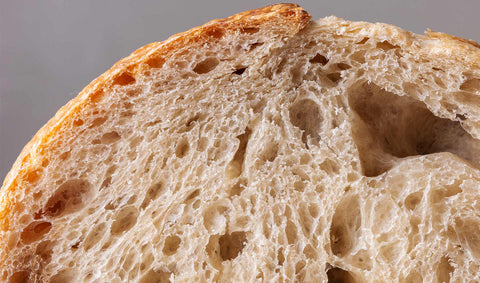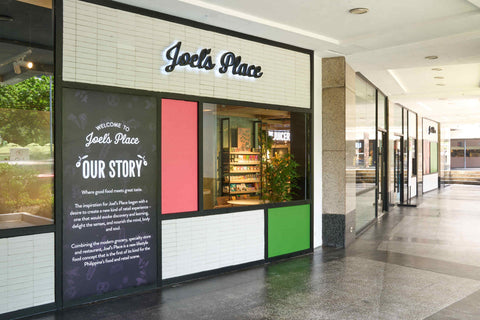About 1,500 steps away from my apartment is a quaint cafe and wine bar, popular among the local crowd as a casual date spot. Tucked in the quiet corner of a dreamy tree-lined street, they offer good food, good wine, and a space for patrons to unwind and catch up. They also happen to sell fantastic sourdough bread, so every 10 days, I take an idyllic 3,000-step walk to bring home a loaf.
Sourdough, for the uninitiated, is bread baked using naturally occurring yeast by way of a sourdough starter. While industrial baker’s yeast is a relatively modern-day invention, sourdough is one of the most ancient forms of bread baking—with one of the oldest recorded bakes dating back to 3700 BC. It’s likely you’ve heard of it in 2020, though, when sourdough experienced a resurgence in popularity thanks to a global pandemic: folks who found themselves home-bound, locked down, and time-rich needed a hobby that they could pour themselves into amidst uncertain times. (It was either sourdough or monstera plants.) I was one of these folks: at my most unhinged, anxiety-fueled baking session, I baked a whopping 8 loaves of bread in one day… “totally normal behavior,” my sister jested. “Not at all a cry for help.”
Baking sourdough is consuming, engaging, and requires time, effort, and diligence. Before you can dream about the smell of freshly baked bread wafting from your kitchen, you must first keep your sourdough starter alive and healthy.

The goal of creating a sourdough starter is to “harvest” yeast spores from the environment which you can then use to leaven your bread. The quality of your starter impacts the quality of your bread so you must keep it healthy and happy.
I named my first one Walter, and I remember the excitement I felt the day we ‘met’. I read a lot of books, watched countless videos, and even took notes. I was so sure he and I would make loaves and loaves of delicious bread together. As an experienced home baker, I approached my new project with the clinical preciseness I usually do when making cheesecakes, pies, and even Paris Brest—I measured to the gram, took the water’s temperature, and kept multiple alarms on my phone: check on Walter, feed Walter, move Walter somewhere warmer, etc. I was devoted, but alas, a few weeks of terrible bakes later, Walter died. Discouraged, I chucked the jar—hooch and all—in the chiller trying to forget the whole thing ever happened.
A few weeks later (the pandemic was long), I decided to give it another go. Armed with more real-life experience this time, I mustered up the courage to retrieve my dead starter’s jar from the chiller, say thanks to Walter, and try again. I named my second starter Jesse (I loved Breaking Bad), and while I want to tell you that everything finally clicked with Jesse, the truth is that we didn’t make any good bread together, either. The delicious loaves didn’t happen until starter #3, which I randomly named Kevin.
It takes about a week to get a sourdough starter ready for baking. On Day 1, all you do is mix flour and warm water in a jar and allow it to rest overnight. Day 2 isn’t very exciting—ideally, you’ll start to notice bubbles indicating fermentation, but because your starter is still very young, it’s also common to not see anything at this stage; you must be patient. Then, you’ll want to regularly feed your starter on Days 3 to 7, until you notice a predictable pattern in its rising and collapsing. By this time, you can start using it to bake bread.

In my experience, baking sourdough felt more like taking care of a living thing—and that’s because it is. Handling sourdough leans poetic, romantic even, precisely because you’re working and interacting with a community of live bacteria and yeast—living things respond to intuition, connection, and intent.
Maybe it was because I had gone through a steep learning curve and over 50kg of flour by the time I was baking with Kevin, maybe I finally learned how to be more intuitive with bread baking, maybe it was all the learnings from Walter and Jesse, but Kevin and I finally clicked. We made a lot of decent sourdough loaves. For the care and attention I had given it, I was rewarded with deliciousness and a very fulfilling sense of accomplishment. I was feeding him, and he was feeding me—both literally and metaphorically.
At a time when humans had to stay away from each other, baking sourdough pulled my focus and allowed me to be more grounded and present. It also became the vessel that fed my connections. In no time, I was hooked and was making more loaves than our household could manage to eat, so I passed out loaves to neighbors, called friends to drive curbside to pick up the day’s extra bread and chat through their car windows, and made birthday sourdough to send to loved ones melancholic about spending yet another birthday in lockdown.

During that time, sourdough became my expression of love to the people around me—made more special by the fact that love had been poured out (to my starter) through the process. I fed my starter, it fed me, and now it was feeding my community.
These days, I don’t get to make my own sourdough—my kitchen is small, responsibilities abound, and I don’t have as much time as I did during lockdown. Instead, when my sister comes to visit, we purchase and split a loaf. My officemates bring 12-hour and 60-hour sourdough loaves to compare at the office. I excitedly serve toasted slices to friends who come over so we can enjoy them with guava jam and cheese (a classic combination I picked up from my grandmother). I still enjoy giving sourdough—albeit storebought this time—as birthday gifts to friends. And on office days, I walk with my teammates to buy a loaf before we separate to go home.
The pandemic is thankfully over, and a lot of my personal circumstances have now changed, but in many ways, physically and metaphorically, sourdough still feeds me.





